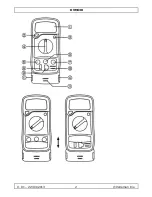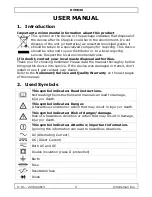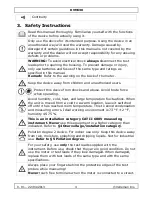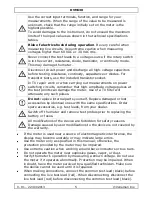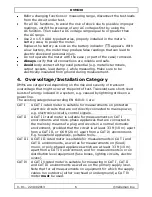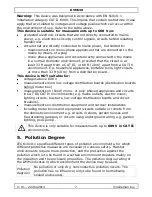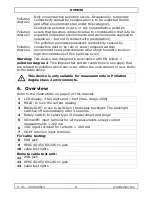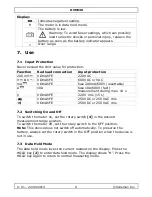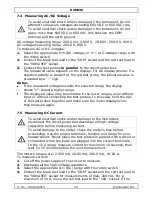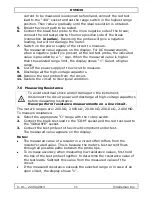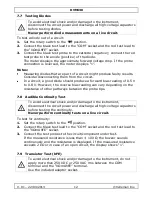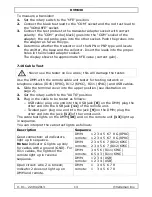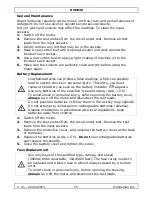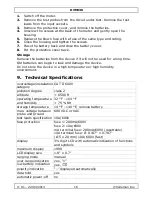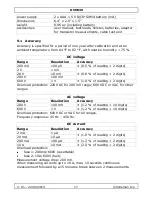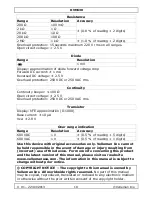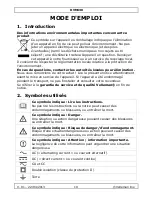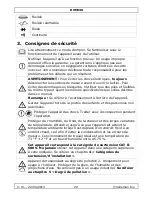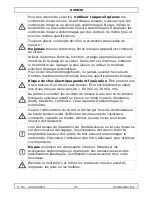
DVM630
V. 01 – 22/04/2013
6
©Velleman Inc.
Before changing functions or measuring range, disconnect the test leads
from the circuit under test.
For all DC functions, to avoid the risk of shock due to possible improper
readings, verify the presence of any AC voltages first by using the
AC function. Then select a DC voltage range equal to or greater than
the AC range.
Use 2 x 1.5 V AAA type batteries, properly installed in the meter‟s
battery case, to power the meter.
Replace the battery as soon as the battery indicator
appears. With
a low battery, the meter may produce false readings that can lead to
electric shock and personal injury.
Do not operate the meter with the case (or part of the case) removed.
Always
verify that all connections are reliable and safe.
Avoid
body contact with ground potential (e.g. metallic terminals,
output sockets, lead clamp…) while measuring. Make sure to be
electrically insulated from ground during measurement.
4.
Overvoltage/Installation Category
DMMs are categorized depending on the risk and severity of transient
overvoltage that might occur at the point of test. Transients are short-lived
bursts of energy induced in a system, e.g. caused by lightning strike on a
power line.
The existing categories according EN 61010-1 are:
CAT I
A CAT I-rated meter is suitable for measurements on protected
electronic circuits that are not directly connected to mains power,
e.g. electronics circuits, control signals…
CAT II A CAT II-rated meter is suitable for measurements in CAT I
environments and mono-phase appliances that are connected to
the mains by means of a plug and circuits in a normal domestic
environment, provided that the circuit is at least 33 ft (10 m) apart
from a CAT III, or 66 ft (20 m) apart from a CAT IV environment.
E.g. household appliances, portable tools…
CAT III A CAT III-rated meter is suitable for measurements in CAT I and
CAT II environments, as well as for measurements on (fixed)
mono- or poly-phased appliances which are at least 33 ft (10 m)
apart from a CAT IV environment, and for measurements in or on
distribution level equipment (fuse boxes, lighting circuits, electric
ovens).
CAT IV A CAT IV-rated meter is suitable for measuring in CAT I, CAT II
and CAT III environments as well as on the primary supply level.
Note that for all measurements on equipment for which the supply
cables run outdoors (either overhead or underground) a CAT IV
meter
must
be used.


